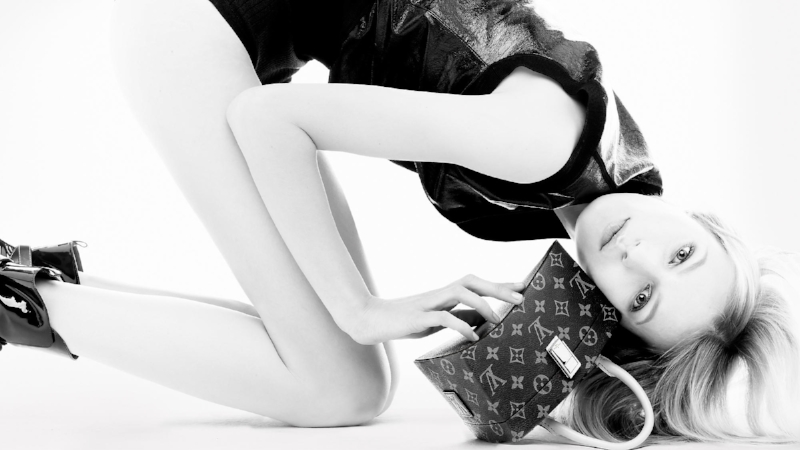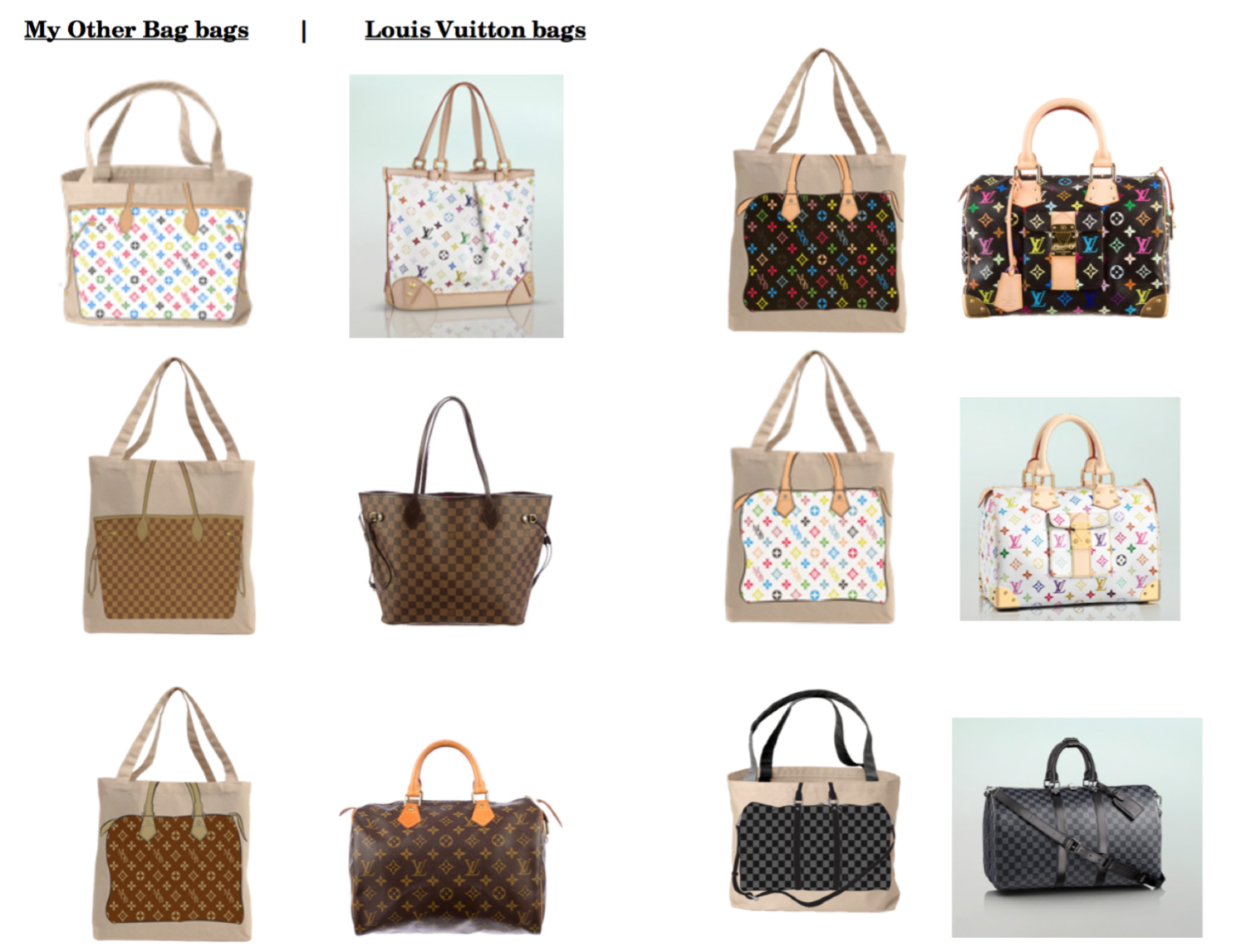
image: LV
As two lower courts stated over the past several years, to just about everyone but Louis Vuitton, the joke that My Other Bag is allegedly making with its inexpensive canvas tote bags is obvious. The Los Angeles-based brand’s tag line, “My Other Bag is …” is a play on the already in-existence tagline, “My other car is a [insert name of expensive car here]” that has spawned no shortage of bumper stickers, which are placed on … well, not very nice cars. The aim is to juxtapose the consumer’s cheap car with the expensive car listed on the bumper sticker.
This is the aim of My Other Bag – or as Louis Vuitton asserts, the aim of My Other Bag since it filed a trademark and trade dress infringement and copyright infringement lawsuit in 2014. The luxury brand has been very insistent in its filings that prior to filing suit against My Other Bag, the company’s “website and social-media pages did not make any mention of a ‘parody. [And] MOB admitted that after this litigation was initiated, it added language to its website claiming that it was ‘playfully parodying’ designer handbags.”
Louis Vuitton has unequivocally been made out to be the bad guy in the case to date. Two New York state courts have taken the brand to task for filing the lawsuit in the first place. U.S. District Judge Jesse Furman ruled in My Other Bag’s favor on all of Louis Vuitton’s claims in January 2016, writing in his 31-page decision that Louis Vuitton “is perhaps unfamiliar with the ‘my other car’ trope. Or maybe it just cannot take a joke.”
He went on to state, “MOB’s use of Louis Vuitton’s marks in service of what is an obvious attempt at humor is not likely to cause confusion or the blurring of the distinctiveness of Louis Vuitton’s marks. If anything, it is likely only to reinforce and enhance the distinctiveness and notoriety of the famous brand.”
Louis Vuitton was not amused. It has, after all, spent 163 years building its brand – complete with its wildly valuable trademarks. And it believes that “My Other Bag sought to capitalize on the distinctiveness and positive public perception of Louis Vuitton’s marks by marketing otherwise-ordinary canvas bags bearing its famous marks on one side and the words ‘My Other Bag . . .’ on the other.”
As a result, it filed to appeal the lower court’s decision to the 2nd U.S. Circuit Court of Appeals, arguing that Judge Furman misapplied the law. Again, the world’s most valuable luxury brand was chastised.

This time around, the Second Circuit’s three-judge panel affirmed the Southern District of New York’s ruling that the inexpensive “My Other Bag” canvas totes, which bear cartoon imagery of Louis Vuitton trademarks, are, in fact, protected by the fair use defense of parody.
My Other Bag’s lawyers had argued that, as parody, My Other Bag’s canvas totes are entitled to “robust protection under the First Amendment,” and therefore, shielded from Louis Vuitton’s claims of infringement.
Writing for the court, Judge Gerard E. Lynch stated that “the fact that the joke on LV’s luxury image is gentle, and possibly even complimentary to LV, does not preclude it from being a parody… Indeed, a parody of LV’s luxury image is the very point of MOB’s plebeian product.”
The jab: Judge Lynch told Louis Vuitton’s counsel in plain terms, “This is a joke. I understand you don’t get the joke. But it’s a joke.”
Louis Vuitton has since asked the U.S. Supreme Court to hear the case, holding that the Second Circuit’s decision conflicts with existing case law in the Fourth Circuit “regarding the test for identifying parody under the Trademark Dilution Revision Act,” a federal law aimed at preventing famous trademarks from being damaged by unauthorized use.
(Note: Trademark dilution is different from infringement. Dilution occurs when an entity uses a trademark that is sufficiently similar to a famous mark such that it harms consumer perception of the famous mark).
While many doubt that the Supreme Court will agree to take on the case, an amicus brief, written by Rebecca Tushnet of Georgetown and Christopher Sprigman of New York University, and filed in August 2016, arguing that there may be an ever biggest issue at play here: Aspects of the Trademark Dilution Revision Act – which was enacted in 2006 – may not be constitutional.
As Tushnet and Sprigman argued in their brief, protection against trademark dilution manufactures “a right unknown to the Framers of the Constitution,” and that right stands to encroach upon the First Amendment.
The brief stated, Louis Vuitton “claims that dilution law allows it to prevent the creation of unauthorized new associations with its [trademarks], which is to say, to prevent consumers from forming new opinions and beliefs even in the absence of deception.” It continued on to state: “This is not just content-based suppression of speech, it is viewpoint-based suppression of speech – the prime evil against which the First Amendment protects.”
Reuters contacted Tushnet after the brief was filed to “make sure the professors [were] really calling the 10-year-old [Trademark Dilution Revision Act] unconstitutional under the First Amendment.” Tushnet responded that they were, in fact, arguing just that. “We are arguing that at least most of the dilution law, and probably all, is unconstitutional as a regulation of non-misleading speech.”
Louis Vuitton’s counsel fought such claims in its own reply, calling their claims “radical” and “extreme.” It argued: “Not only did Congress reject these views when it enacted TDRA, but no case has found any problem in Congress’ balancing of trademark rights and First Amendment concerns in that statute.”
Such arguments arguably make this case one that the Supreme Court should – and maybe even would – agree to hear. We will have to stay tuned for that … but it is worth noting that the likelihood is very slim. According to the Supreme Court blog, of the 7,000 to 8,000 cert petitions filed each term, the court grants certiorari and hears oral argument in only about 80.










